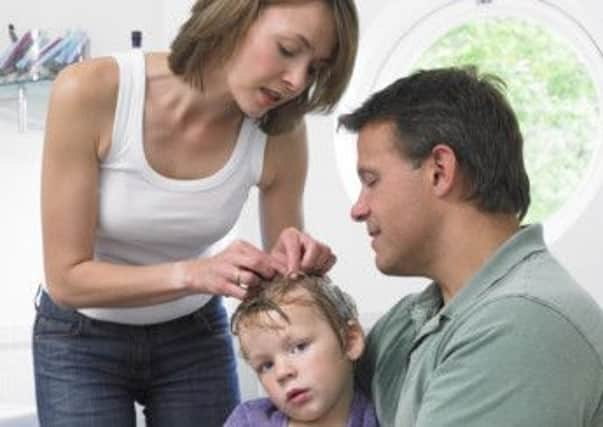Fending off the classroom bugs


An education isn’t the only thing kids will be gaining when they start the new school term – the far less desirable result of mixing with other children in the classroom is picking up plenty of childhood bugs.
Fortunately, most aren’t serious. Nevertheless, they can lead to kids missing school and parents worrying.
Advertisement
Hide AdAdvertisement
Hide AdOn average, children catch between nine and 12 viruses a year, many during winter, and parents may feel they’re constantly unwell.
Reminding them to wash their hands is important but, aside from keeping them in quarantine, avoiding all bugs is practically impossible.
Dr Donald Macgregor, of the Royal College of Paediatrics and Child Health, stresses that nutrition plays a big part, with good levels of vitamin A and E important for protecting the gut and airways.
“Poor nutrition affects the immune system, and children who are better nourished bounce through illnesses much better than children who aren’t,” he says.
Advertisement
Hide AdAdvertisement
Hide AdKids are most likely to catch bugs when they start nursery, but the good news is that as they build up immunity over time, they’ll generally become less susceptible. If your child has underlying health problems or a weak immune system, common ailments can be more troublesome, and what for one might be a case of feeling peaky for a few days, could be a more serious matter for another.
“If you’re unsure about any symptoms your child has, ask your GP before taking them to school,” advises Macgregor.
“My own perspective is that too many children are off school when they don’t need to be because of anxiety about these illnesses. ”
COUGH & COLD
The rhinovirus (coughs and colds) is the most common type of virus and can be more severe in younger children, as their airways are narrower and their tonsils and adenoids bigger. As they’re spread by droplets – coughs, sneezes and on hands – they’re far more common in winter when children are huddled together inside, doors shut.
SICKNESS & DIARRHOEA
Advertisement
Hide AdAdvertisement
Hide AdGastroenteritis – inflammation of the stomach and bowel – is often caused by norovirus and rotavirus when it comes to kids. Symptoms include vomiting and diarrhoea, usually lasting three to five days, and it can be reduced by encouraging children to wash their hands, says Macgregor, as such bugs are spread through contact.
CHICKENPOX
The dreaded chickenpox – highly contagious and unmistakable with its itchy rash, starting as small red spots which develop into fluid-filled blisters and eventually scabs. There may be mild flu-like symptoms beforehand too. It’s most common in children under 10, and the severity of the rash can range from just a few spots to covering most of the body. While unsightly and extremely itchy, for most kids it isn’t serious, and lots of parents hope to get it out of the way sooner rather than later.
MUMPS, MEASLES & RUBELLA
These three highly infectious conditions are usually mild, but can have serious, potentially fatal, complications, including meningitis, swelling of the brain (encephalitis) and deafness. They can also lead to pregnancy complications, and mumps – characterised by painful swelling at the sides of the face – can spread to the testes in post-pubescent males, which can lead to infertility. Since the MMR vaccine was introduced in 1988, it’s rare for children in the UK to catch the illnesses, although there have been measles outbreaks in recent years.
SLAPPED CHEEK
This parvovirus infection can cause mild flu-like symptoms, followed several days later by a bright red rash on both cheeks, which may spread to other parts of the body and cause discomfort and itching.It can cause problems in pregnancy, but often goes unrecognised in children as it can be very mild and usually doesn’t require treatment unless accompanied by a high temperature or symptoms worsen.
SCARLET FEVER
Advertisement
Hide AdAdvertisement
Hide AdThe bacterial illness, which has reappeared in recent years, can be spread through coughs and sneezes and causes a sore throat, fever and a widespread, fine pink-red rash.
Treatment for head lice
HEAD LICE – Head lice are extremely common, particularly when children are younger and huddle together more, making it easy for lice to jump from head to head.
The tiny blood-sucking insects, whose eggs are known as nits, can make the scalp inflamed and itchy.
Ian Burgess, director of the Medical Entomology Centre, says: “Head lice were once regarded as a problem that other families had, but they’re now so common among young children that an infestation can occur at any time, no matter how careful parents are to keep them clear.”
Advertisement
Hide AdAdvertisement
Hide AdHe suggests parents use a good louse comb at least twice a week to comb through hair root to tip. If lice are found, use an approved treatment from a pharmacy and always follow the instructions. He says all members of the family should be checked and treated if necessary.